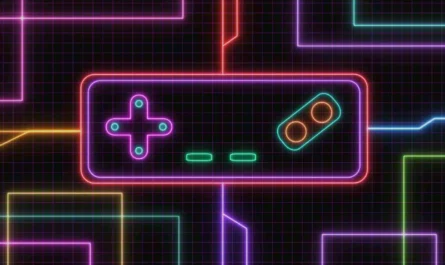When you think of video games today, the mind often jumps to hyper-realistic graphics, sprawling open worlds, or the sheer power of next-gen consoles. Yet, beneath the surface of today’s blockbuster releases lies a beating heart shaped by 8-bit legends. Titles from the late ‘70s through the early ‘90s didn’t just entertain — they established the very foundations of modern gaming.
The Birth of Gaming Culture
Retro classics like Pac-Man, Donkey Kong, and Space Invaders weren’t just games; they were cultural phenomena. These pixelated icons introduced millions of players to interactive entertainment for the first time. Arcades became social hubs, and cartridges turned the living room into a competitive arena. Without these humble beginnings, gaming might never have developed into the $180 billion industry it is today.
Gameplay Over Graphics
Modern titles dazzle with cinematic realism, but ask any retro fan and they’ll tell you — it’s the gameplay that matters most. 8-bit games had limited storage and graphical capacity, forcing developers to focus on mechanics. Super Mario Bros. nailed the feel of running and jumping. Tetris perfected the “easy to learn, hard to master” model. These mechanics remain timeless because they emphasize fun and challenge rather than visual polish.
Many indie developers today intentionally mimic this style. Games like Celeste and Shovel Knight thrive on mechanics-first design, proving the 8-bit blueprint is still relevant decades later.
Storytelling in Pixels
While the blocky visuals left much to the imagination, retro games often told compelling stories through simplicity. The Legend of Zelda gave players an open world and a quest for adventure that set the stage for every fantasy RPG that followed. Metroid introduced mystery, exploration, and one of gaming’s most iconic plot twists.
These classics demonstrated that narrative could thrive even with minimal dialogue and limited tech. Today, developers still draw inspiration from these storytelling frameworks, layering modern graphics over retro-inspired mechanics.
Enduring Communities
Another reason retro classics endure is the passionate communities that keep them alive. Speedrunners dissect games like Mega Man 2 and Castlevania down to the millisecond, showcasing the precision of their design. Retro tournaments celebrate 8-bit fighters like Street Fighter II and Mortal Kombat. Meanwhile, emulation and re-releases on platforms like the Nintendo Switch Online ensure new generations experience these timeless gems.
The demand for nostalgia even fuels modern business. Nintendo’s NES and SNES Classic mini-consoles sold out worldwide, proving that gamers crave the simplicity and challenge of yesteryear.
Why They Still Matter
The influence of 8-bit legends extends far beyond nostalgia. They remind us that constraints breed creativity, and that core gameplay will always outlast fleeting graphical trends. Every checkpoint system, difficulty curve, and collectible hunt in modern titles owes a debt to these early experiments.
Most importantly, these games connected people. Friends gathered around glowing arcade cabinets, siblings passed controllers back and forth, and communities formed long before online play existed. That sense of shared joy remains the essence of gaming today.
Retro gaming isn’t just about remembering the past — it’s about understanding the roots of where gaming is headed. The lessons of 8-bit design continue to inspire developers and captivate players. As technology advances, one truth remains: no matter how stunning the graphics, it’s the spirit of those early legends that keeps gaming timeless.
So the next time you boot up your PlayStation 5, Xbox Series X, or Nintendo Switch, remember — the adventure began with a handful of pixels, a joystick, and the pure joy of play.
Unlock Full Article
Watch a quick video to get instant access.



